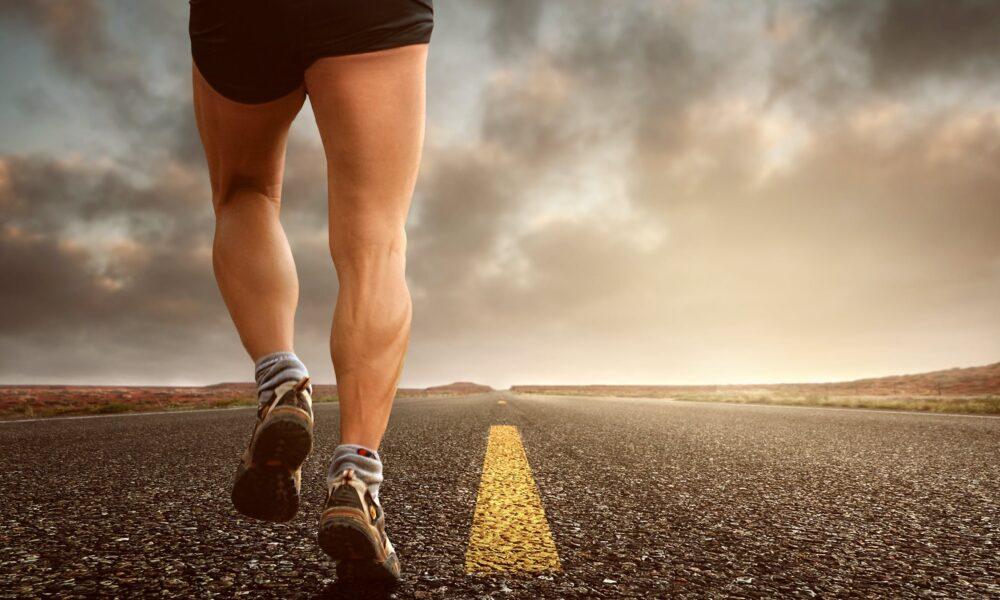

Do you feel frustrated by stubbornly small or underdeveloped calf muscles despite putting in the effort at the gym? Are you longing for sculpted, muscular calves so that you can enhance your overall physique and boost your confidence? If so, you’re not alone.
The journey to building impressive calf muscles is a common challenge many fitness enthusiasts face. This is because calf muscles take time to grow and need more focused training attention, which many bodybuilders ignore.
While calf muscles are stubborn, adopting targeted and effective calf exercises and good nutrition can help you build and strengthen them within a short period.
This article provides calf muscle nutrition and comprehensive exercises designed to carve out the strong, muscular lower legs you desire. But before we dive in, let’s learn about calf muscles for better understanding.
What are Calf Muscles?
Calf muscles are found below your knees (connecting knees and ankle). They comprise two main parts: the gastrocnemius, the largest and the outermost muscle, and the soleus, the inner muscle.
The gastrocnemius muscle has two heads: the lateral head that sits outside the lower leg and the medial head inside. These two heads work together to facilitate the gastrocnemius function of flexing the knee and foot, which makes it possible to do workouts such as jumping and those that require acceleration and explosive speed, like sprinting and plyometric exercises.
6 Benefits of Calf Workout
Incorporating calf workouts into a lower-body training routine is essential for athletes, including bodybuilders. Consistent and targeted calf exercises improve ankle mobility and balanced muscle development.
Here are six reasons you should add them to your fitness training routine.
1. Promote Muscle Development
Calf workouts target the gastrocnemius and soleus muscles, increasing muscle size and definition. Developing these muscles contributes to overall lower leg strength, which is essential for working out and doing daily activities such as walking.
2. Improve Ankle Mobility
Calf workouts strengthen calf muscles and improve ankle mobility and balance. This is particularly beneficial for running, jumping, and weight-bearing activities on the lower extremities.
Improved balance and stability also reduce the risk of ankle injuries.
3. Enhanced Athletic Performance
Well-conditioned calf muscles are crucial for various athletic activities such as running, jumping, and agility movements. Calf exercises strengthen the lower legs, making them stronger and more responsive to support and improve your performance in sports and fitness pursuits.
4. Promotes Joint Health and Muscle Recovery
Like any other exercise that stimulates blood and improves the circulation of nutrients, calf workouts stimulate blood flow and nutrient circulation in the lower legs. Increased blood flow and nutrient delivery to the muscles promote joint health, reducing the risk of stiffness and discomfort.
Improved circulation can also contribute to the recovery of sore muscles after strenuous activities.
Additionally, calf exercises help distribute the impact of activities, reducing stress on the shins. This can prevent shin splints, a common condition characterized by pain along the shinbone.
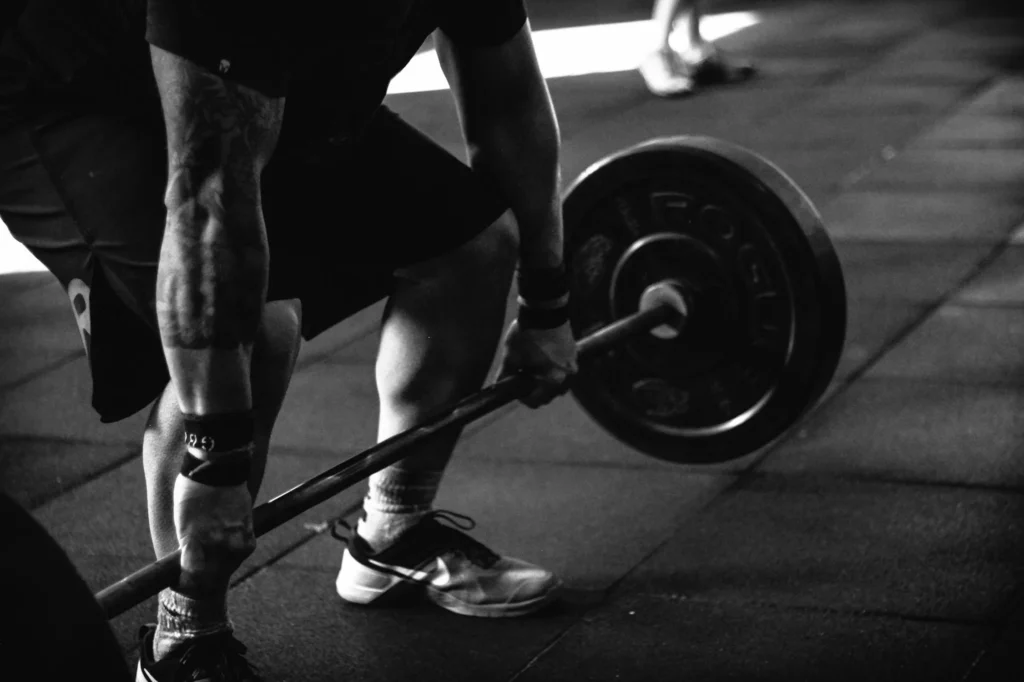
5. Gained Strength and Explosiveness
Strong calves help in explosive movements such as sprinting and jumping. Calf exercises, like calf raises and plyometric drills, help develop the fast-twitch muscle fibers, contributing to greater push-off power and acceleration during explosive movements.
6. Boost Athleticism and Resilience.
Calf workouts enhance muscle endurance, allowing athletes to perform at a high level for an extended period. This increased endurance can delay the onset of fatigue, enabling athletes to withstand the physical demands of training to reach their fitness goals.
Training with calf exercises makes your calf muscles strong. Strong calf muscles support the ankles and lower legs, reducing the risk of injuries such as sprains and strains.
How to Train Calf Muscles
Calf muscles require focused attention training to grow stronger and develop. Incorporating squats or bodyweight exercises on your leg days without focus won’t bring the fitness change you need.
Pay attention to the position of your foot to ensure you reap the benefits of calf exercises. Any slight shift in foot positioning will affect your performance and fitness goal.
For instance, building three-dimensional calves requires many approaches. You need to constantly work out the concentric and eccentric contractions of calf muscles from different angles, take steps of different shapes and sizes, and do many reps at a time.
While many reps are sometimes good, varying rep schemes are crucial when doing calf exercises. Perform 10 to 25 reps, interchanging between volume (number of reps) and strength days (weight or loads). Plyometric workouts are also suitable for training calf muscles.
How Often Should You Train Calf Muscles?
The frequency of calf workouts depends on your fitness level, goals, and overall workout routine.
For beginners, perform 2-3 sets of each exercise with higher repetitions (12-20 reps). Also, ensure you stick to 2-3 calf workouts per week and allow hours of rest between sessions to facilitate recovery.
For advanced athletes or bodybuilders, train calves 3-5 times weekly. Incorporate different strength-focused workouts with lower repetitions (8-12 reps) and endurance-focused workouts with higher repetitions and intensity levels to target various parts of the calf muscles.
Top 10 Calf Exercises to Build and Strengthen Your Calves
Below are 10 healthy exercises to help you develop and strengthen your calf muscles:
1. Seated Calf Rises
A Seated calf raise allows you to train your leg from a bent position to target soleus muscles more than other calf exercises.
The calf raise machine also allows you to train in various foot positions. You can place your toe in, out, or in a neutral position.
How to Do Calf Raise
- Sit on a calf raise machine with the balls of your feet resting on the block, holding dumbbells on your thighs. Ensure your knees are bent at 90 degrees, and your toes are facing out.
- With your core engaged, lift your heels from the floor as high as possible until you feel a stretch in your calves.
- Slowly lower your heels to the floor and repeat.

2. Jumping Rope
Jumping rope is a fantastic cardiovascular exercise that improves coordination, agility, and endurance. Besides developing your calves through repetitive movement, jumping rope helps burn fat, hit cardio, and generate explosive lower-body plyometric power.
You can perform it as a pre-workout to warm up your calf muscles, post-workout for muscle recovery, or alone as cardio exercise.
How to Do Jumping Rope
Before you start, ensure it’s an appropriate length for your height.
- Holding the handles of the jump rope in each hand, stand in the middle of the rope with your feet together.
- Place the jump rope behind you on the ground. Ensure you hold the handles comfortably, ensuring they’re not too tight to allow better control and endurance during the exercise.
- Jump off the ground using the balls of your feet as you swing the rope under your feet and overhead. Keep your knees slightly bent, shoulders lowered, and your core engaged as you perform this workout.
3. Dumbbell Jump Squat
The dumbbell jump squat is a plyometric exercise that combines a traditional squat movement with explosive jumping. It targets the lower body muscles, particularly the quadriceps, hamstrings, and glutes. The dumbbell jump squat also engages the calves during the ascension and stabilization when landing.
Additionally, the workout can enhance cardiovascular fitness.
How to Do Dumbbell Jump Squat
- Holding dumbbells in your hands, stand with your feet shoulder-width apart.
- Hinge at your hips to bend down so your thighs are parallel to the floor in a squat position.
- Straighten your legs and jump high off the ground in an explosive movement.
- With your knees bent, land softly to your starting position (squat) and repeat.
4 Tiptoe Walk
The tiptoe walk, also known as toe walking, is a simple yet effective exercise that targets the muscles in your calves, ankles, and feet. It improves ankle stability and balance and activates the calf muscles, promoting strength and endurance.
How to Perform the Tiptoe Walk
- Stand upright with your feet hip-width apart and slowly lift your heels off the ground, rising onto the balls of your feet. Focus on balancing on your toes.
- Start walking forward in a straight line, placing one foot in front of the other while maintaining the tiptoe. Ensure that each step is deliberate and controlled.
- After walking a short distance, turn around and return to the opposite direction. Aim for at least 20-30 seconds initially and gradually increase as your strength improves.
5. Farmer’s walk
A Farmer’s walk is an exercise that involves lifting a weight from the ground and walking with it for a distance. It targets the muscles of quads, hamstring, calves, glutes, lats, abs, biceps, back, and triceps.
The workout increases muscle strength and improves cardiovascular health and endurance.
How to Do Farmer’s Walk
- Place a pair of dumbbells on the ground and stand tall between them.
- With your chest open and retracted shoulder blades, lift the weight from the ground and hold it in your hands. Ensure the weights do not rest on your thighs.
- With your head straight and rigid, walk forward on your toes to engage the core muscles.
- Walk back to the position and repeat.
6 Speed ladder
A speed ladder workout is a dynamic and agility-focused exercise routine that involves using a ladder-like grid on the ground to perform various footwork. They are versatile and can be adapted to various fitness levels. Incorporate these exercises into your training routine to enhance agility, footwork, and overall athletic performance.
How to Perform Speed Ladder Workout
- Stand at one end of the ladder and quickly step into the first square with both feet, then step out to the side.
- Repeat this pattern through the entire ladder length or perform 3-4.
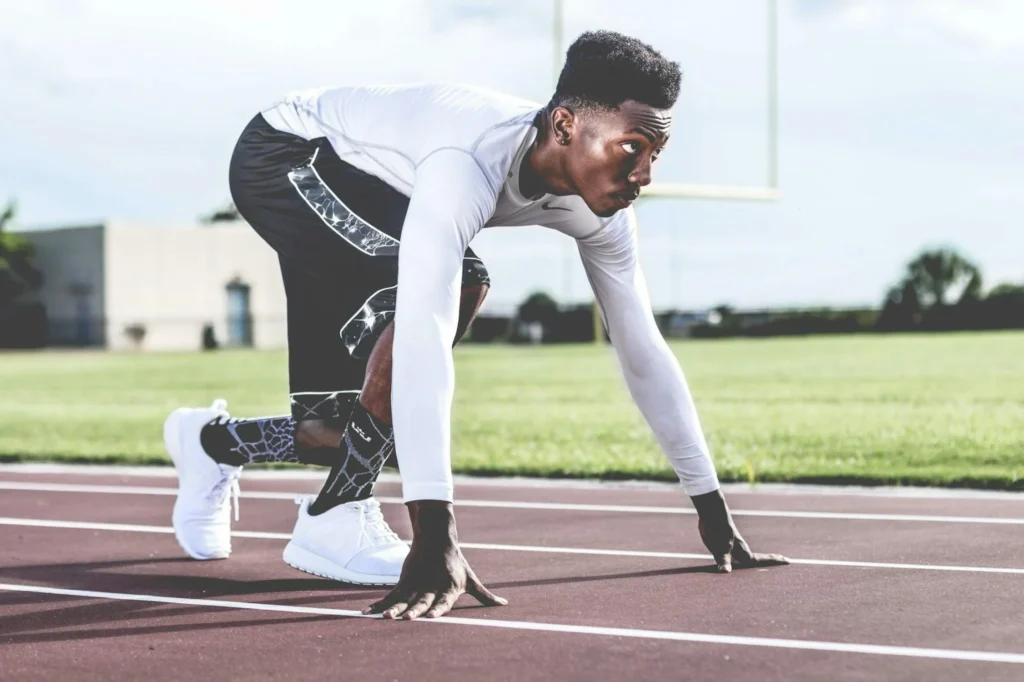
7. Sprints
Sprinting is a high-intensity, explosive exercise that engages various muscle groups, including the calves. It can effectively improve cardiovascular fitness, burn calories, and enhance overall lower body strength and power.
How to Do Sprinting
For acceleration sprints, start with shorter sprints (20-30 meters) or perform 6-8 sprints with full recovery (2-3 minutes) between each sprint.
For maximum speed sprints, move on to longer sprints (40-100 meters) for maximal speed development.
What to Eat to Develop Bigger Calves
Building bigger calf muscles involves a combination of targeted exercises, proper nutrition, and adequate recovery. Here are some dietary considerations to help you build bigger calf muscles:
Balanced Diet
A well-rounded diet provides essential nutrients for overall health and muscle development. Include adequate protein in your diet, which is necessary for muscle repair and growth. High-quality protein sources include lean meat (chicken, turkey, beef), fish, eggs, dairy products (Greek yogurt, cottage cheese), and plant-based proteins (tofu, lentils, beans).
Also, focus on consuming high-carbohydrate food such as fruits, vegetables, and whole grains to provide energy for your muscles during workouts.
Supplements, post-workout nutrition, and healthy fats can also be necessary in building bigger calves. Supplements maximize your calf-building results, and post-workout provides your muscles with the nutrients they need for recovery.
Include sources of healthy fats in your diet, such as avocado, fish oil, and olive oil. They play a role in hormone production, including muscle growth hormones. Common supplements for muscle growth may include protein powder, creatine, and branched-chain amino acids (BCAAs). Post-workout nutrition could be a protein shake with added carbohydrates or a meal containing lean protein and complex carbohydrates.
Proper hydration is essential for overall health and can impact muscle function and recovery. Drink Plenty of water throughout the day.
Conclusion
Building muscle, including calf muscles, takes time and consistency. Combine a well-rounded diet with targeted calf exercises like calf raises, jumps, and sprints for comprehensive muscle development. Additionally, individual nutritional needs may vary, so consult a nutritionist for personalized advice based on your goals and health status.













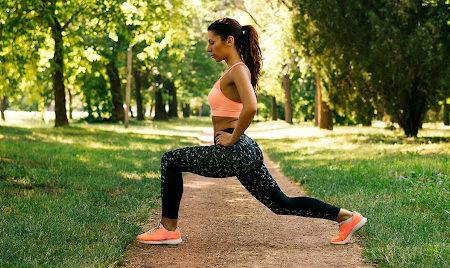


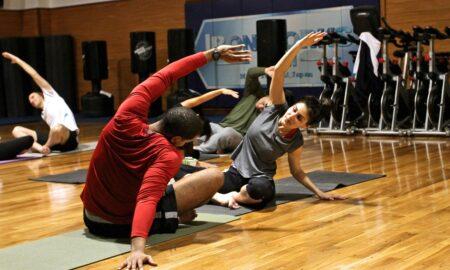





You must be logged in to post a comment Login